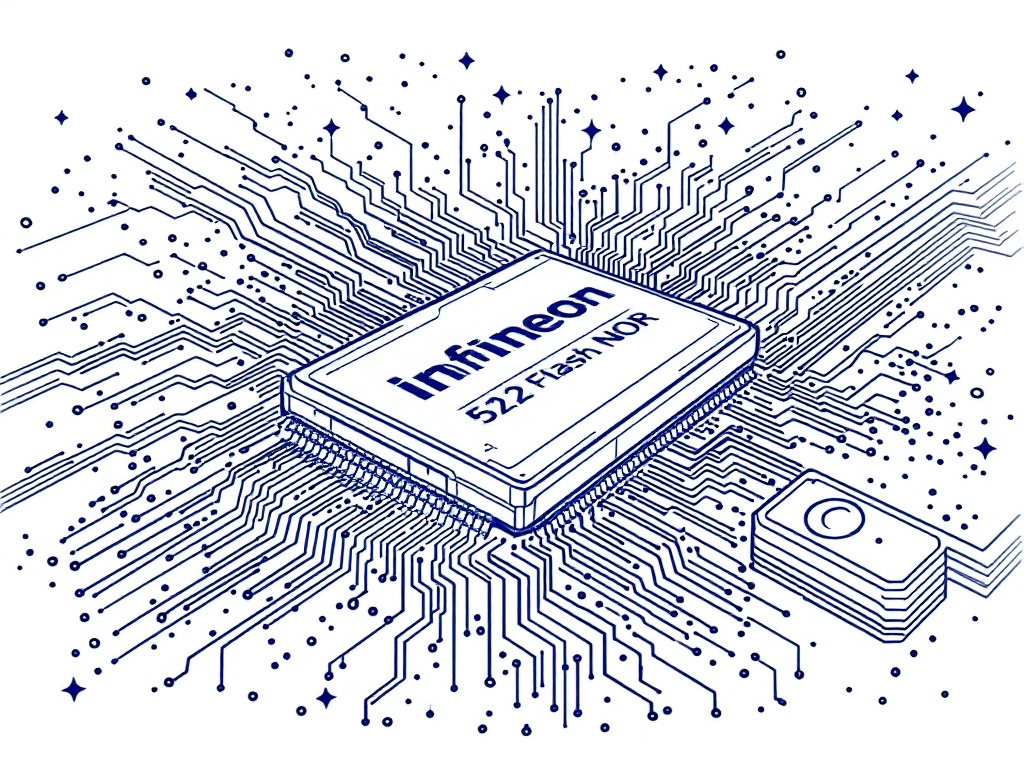Space Memory Breakthrough: Infineon's New Radiation-Proof Flash Storage

Kaufering, Monday, 18 November 2024.
Infineon Technologies unveils groundbreaking 512 Mbit NOR Flash memory, specifically designed to withstand space radiation. This innovation, developed with U.S. Air Force backing, operates 30% faster than existing solutions and maintains data integrity for up to 10 years - a critical advancement for next-generation spacecraft and satellites requiring reliable, high-performance storage in extreme conditions.
Innovative Design and Collaboration
Infineon Technologies AG (ticker: IFX) has made a significant leap in the field of space-grade memory solutions with its newly announced 512 Mbit QSPI NOR Flash memory. This development, unveiled on 18 November 2024, represents the first radiation-hardened-by-design memory of its kind, a feat achieved through collaboration with the Microelectronics Research Development Corporation (Micro-RDC) and funding from the U.S. Air Force Research Laboratory (AFRL). The device’s ability to operate 30% faster than lower density alternatives is set to revolutionize data storage for space-grade field-programmable gate arrays (FPGAs) and microprocessors, which demand both speed and reliability in the harsh conditions of space [1].
Technical Specifications and Performance
The NOR Flash memory features a quad serial peripheral interface (QSPI) capable of operating at 133 MHz, which provides rapid data transfer rates essential for space-grade applications. Its endurance, reaching up to 10,000 program/erase cycles, alongside a data retention capability extending up to 10 years, underscores its suitability for long-term missions in space. Designed to support configuration image storage for space-grade FPGAs and standalone boot code storage for multi-core processors, this memory device is available in both ceramic and plastic packages, offering flexibility for various design needs [1].
Market Implications and Strategic Positioning
Infineon’s introduction of this advanced memory technology aligns with the growing demand for high-reliability, high-density storage solutions in space applications. As the aerospace industry continues to evolve, the need for robust, radiation-resistant components becomes increasingly critical. Infineon’s strategic collaboration with Micro-RDC and support from the AFRL not only enhances its product offerings but also strengthens its position in the semiconductor market, particularly in sectors that require superior resilience and performance under extreme conditions. With a reported revenue of approximately €15 billion in the 2024 fiscal year and over 58,000 employees worldwide, Infineon is poised to capitalize on this technological breakthrough to further its influence in the global market [1][2].
Industry Context and Future Prospects
The unveiling of this radiation-hardened NOR Flash memory coincides with a broader industry trend towards enhancing the resilience of electronic components used in space exploration and defense applications. As space missions become more ambitious and extended, the reliability of onboard systems is paramount. Infineon’s innovation not only meets these demands but sets a new benchmark for future developments in space-grade electronics. The company’s continued investment in cutting-edge technology and strategic partnerships suggests a promising trajectory in addressing the complex challenges of space technology, ensuring that spacecraft and satellites are equipped with the most advanced and reliable components available [1][2].